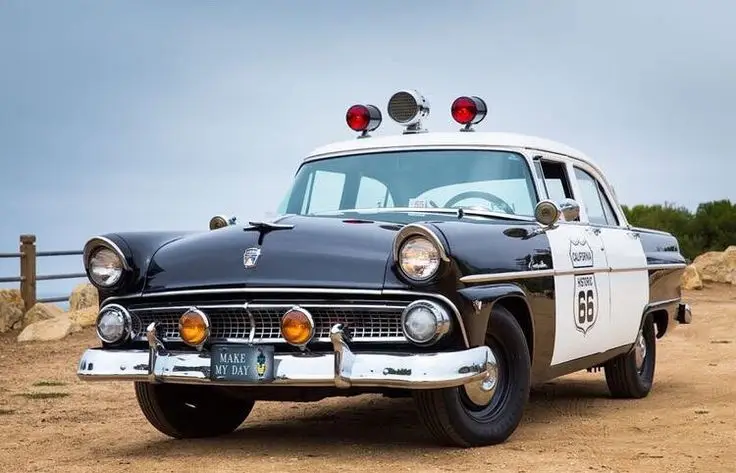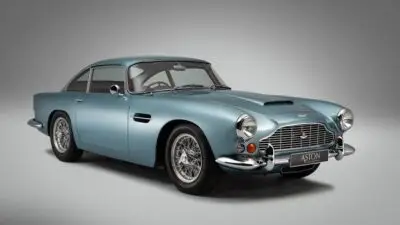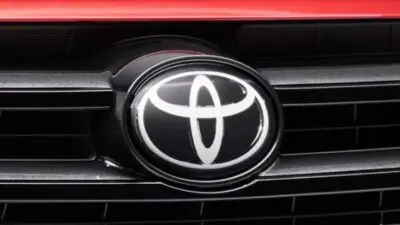Police cars have changed a lot over the years. They began as simple transportation for officers, often just regular cars with a police badge painted on the side. Today’s police vehicles are very different from those early models. Police cruisers have evolved from basic modified civilian cars into specialized high-tech machines equipped with computers, advanced communication systems, and special features for law enforcement duties.

The journey from horses to modern police vehicles shows how law enforcement has adapted to changing times. Early police departments used horses and bicycles before switching to cars in the early 1900s. As crime fighting methods changed, so did the vehicles officers used. Classic police cars like the 1978 Plymouth Volare have given way to today’s advanced Ford Interceptors and Chevrolet Tahoe police models that combine speed, safety, and technology.
Key Takeaways
- Police vehicles evolved from regular civilian cars with simple modifications to purpose-built machines designed specifically for law enforcement needs.
- Iconic models like the Ford Crown Victoria defined American policing for decades before being replaced by newer, more advanced vehicles.
- Modern police cars now feature sophisticated technology including mobile data terminals, automated license plate readers, and specialized equipment for different policing tasks.
The Earliest Police Vehicles

Police transportation underwent significant changes in the early 20th century as departments moved from traditional methods to motorized vehicles. This transition revolutionized law enforcement’s ability to patrol and respond to incidents.
Evolution from Horse to Horsepower
Before motorized vehicles, police officers primarily used horses for transportation. Mounted patrols were the standard for law enforcement from the 1700s through the early 1900s in most cities and towns across America.
The first transition to motorized police vehicles began around 1899 when the Akron, Ohio Police Department purchased an electric patrol wagon. This early electric vehicle could reach speeds of 16 mph and travel about 30 miles on a single charge.
By the 1910s, motorcycles also became popular with police departments. They were faster than horses and less expensive than early automobiles.
The biggest challenge during this transition period was convincing police leadership to invest in new technology. Many departments maintained both horse and motorized units for several years during the changeover.
The Ford Model T’s Impact on Policing
The Ford Model T transformed police work when it was introduced in 1908. Its affordability and reliability made it the first widely adopted police vehicle in America.
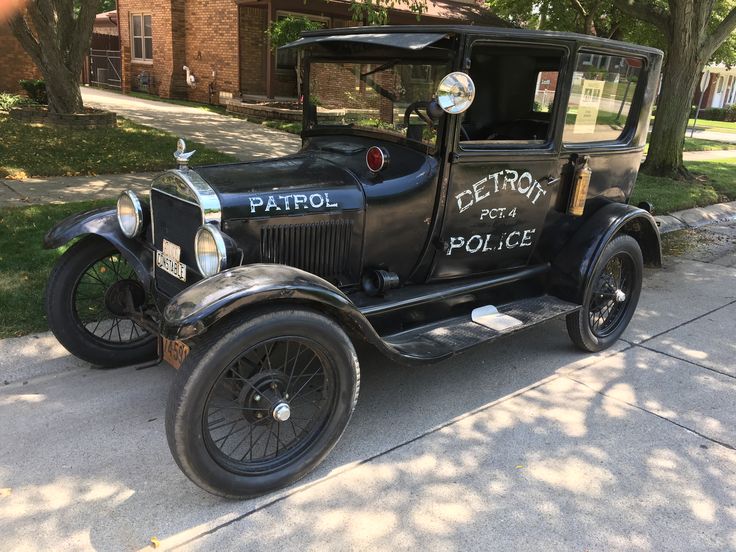
By the 1920s, many law enforcement agencies had purchased Model Ts and customized them for police work. These early police cars typically featured basic modifications like police markings, spotlights, and sometimes a bell for emergencies.
The Model T’s impact was profound. It expanded patrol coverage significantly, allowing officers to respond to calls much faster than mounted units could. A single officer in a Model T could patrol an area that previously required multiple mounted officers.
Police departments in rural areas especially benefited from the Model T’s rugged design and ability to handle rough roads. Law enforcement agencies quickly realized the Model T’s advantages in pursuits, as it could maintain speeds of 40-45 mph.
Iconic Police Cars throughout the Decades

American police departments have relied on distinct vehicles that became symbols of law enforcement. These cars combined power, durability, and specialized features that made them perfect for police work.
The Reign of the Chevrolet Caprice
The Chevrolet Caprice served as a cornerstone of American police fleets for decades. First introduced in the 1960s, the Caprice quickly gained popularity for its robust frame and reliable performance.

The 1977 Caprice redesign became particularly iconic, featuring a smaller, more efficient body while maintaining the power needed for pursuit situations. Law enforcement agencies appreciated its spacious interior that accommodated equipment and provided comfort during long shifts.
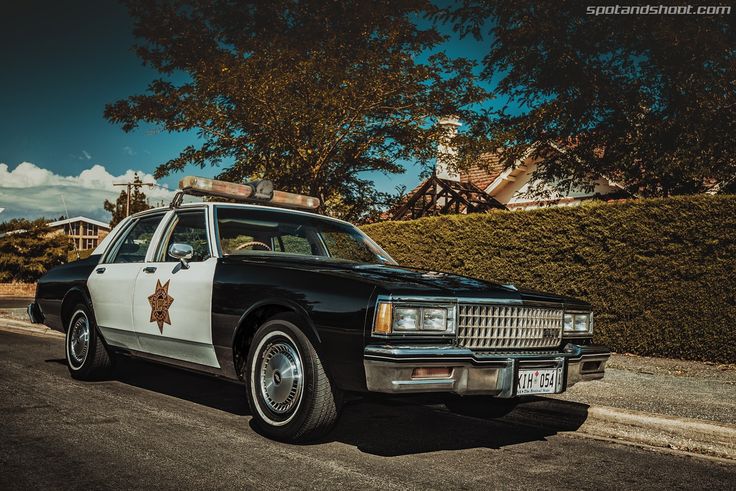
By the late 1980s, the Caprice received the 9C1 police package with upgraded suspension, cooling systems, and electrical components specifically designed for police work. This version dominated police fleets until 1996, when Chevrolet shifted focus to SUV production over the Caprice.
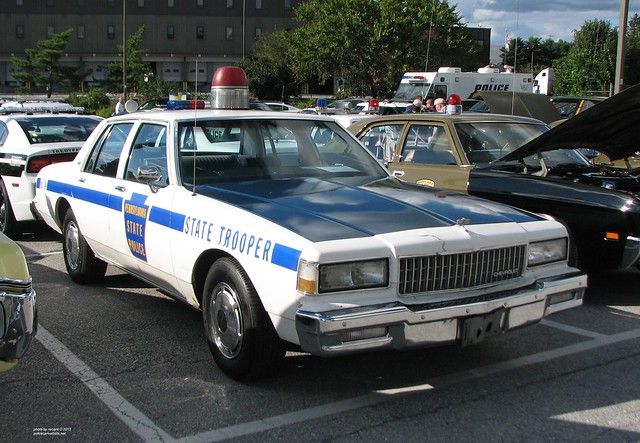
Ford Crown Victoria: The Quintessential Police Car
The Ford Crown Victoria became the definitive police vehicle in American law enforcement after the Caprice’s departure. Its distinctive silhouette with the roof-mounted light bar became immediately recognizable on highways nationwide.
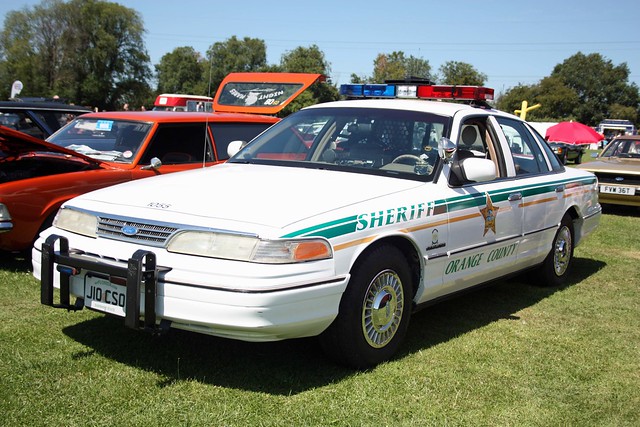
The Crown Victoria Police Interceptor (CVPI) model, introduced in 1992, featured specialized heavy-duty components including:
- Reinforced frame and suspension
- High-performance engine cooling
- Enhanced electrical systems for police equipment
- Pursuit-rated drivetrain
The “Crown Vic” dominated police fleets from 1996 until 2011, when Ford discontinued the model. Its rear-wheel drive platform, durability, and ease of repair made it the backbone of police departments across America.
Many officers developed a strong attachment to these vehicles, appreciating their predictable handling and protection in high-speed pursuits. The Crown Victoria’s long production run allowed departments to standardize maintenance procedures and equipment installations.
Modern Police Vehicles

Today’s police fleets feature advanced technology and specialized designs that maximize performance and utility in law enforcement operations. These vehicles serve as mobile offices while providing the speed and durability needed for police work.
Transition to High Performance Models
The evolution of police vehicles has led to purpose-built machines rather than simply modified civilian cars. The Dodge Charger Pursuit emerged as a dominant force in police fleets during the 2000s, offering powerful V8 engines and pursuit-rated capabilities.
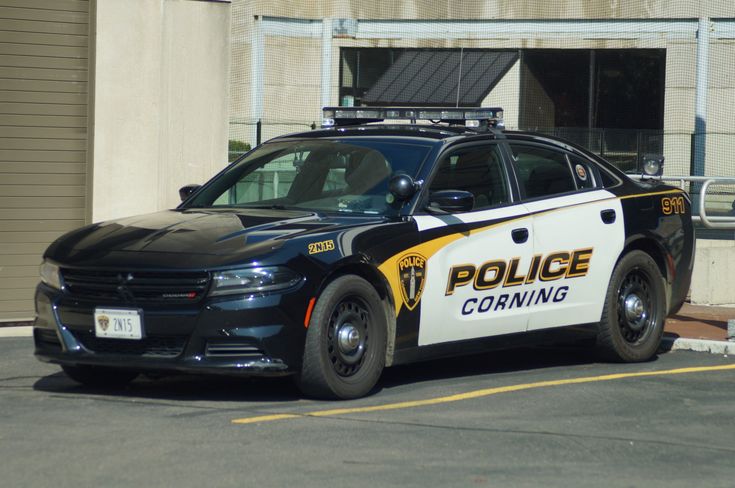
Ford countered with its Police Interceptor sedan, based on the Taurus platform but substantially modified for law enforcement use. These vehicles feature reinforced frames, upgraded cooling systems, and heavy-duty components.
Modern police cars now function as mobile offices equipped with computers, printers, and communication systems. Many departments utilize mobile Wi-Fi and in-car computers that allow officers to complete reports and access databases without returning to the station.
The Rise of SUVs in Law Enforcement
SUVs have steadily replaced traditional sedans in many police departments across the country. The Ford Police Interceptor Utility, based on the Explorer, has become the bestselling police vehicle in America.
These SUVs offer several advantages over sedans:
- Greater interior space for equipment and prisoner transport
- Improved ground clearance for diverse terrain
- Better visibility for officers
- All-wheel drive capabilities for adverse weather conditions
Chevrolet’s Tahoe PPV (Police Pursuit Vehicle) and Dodge’s Durango Pursuit also compete in this growing segment. These high-tech police models feature specialized suspensions and braking systems designed specifically for law enforcement applications.
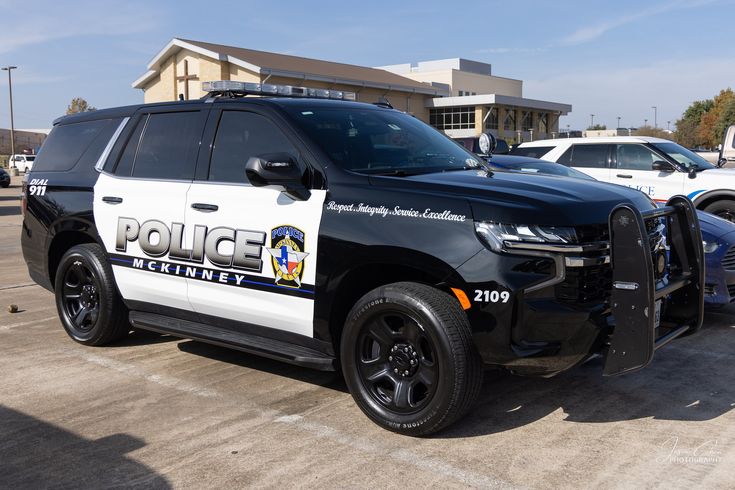
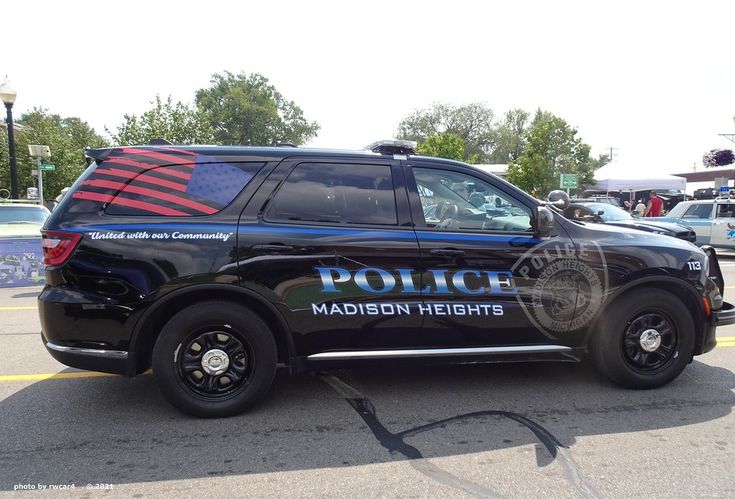
Police SUVs now include advanced safety features such as ballistic door panels and crash prevention technology. Their versatility makes them ideal for urban patrols, rural departments, and tactical units alike.
Specialized Police Vehicles for Pursuit and Patrol

Law enforcement agencies across America rely on specially designed vehicles to handle the demanding tasks of pursuit and everyday patrol. These vehicles combine power, durability, and specialized features to help officers maintain public safety.
Pursuit-Rated Cars and Their Importance
Pursuit-rated vehicles are specially designed police cars that meet rigorous standards for high-speed chases and emergency response. These vehicles feature upgraded brakes, cooling systems, and reinforced frames to withstand the stress of pursuit situations.
The Ford Police Interceptor Utility, based on the Explorer SUV, has become one of the most common types of police cars in the United States. It replaced the popular Crown Victoria model in many departments.
The Dodge Charger Pursuit remains another favorite choice for many agencies. With its powerful V8 engine option and rear-wheel drive platform, it provides the acceleration and handling needed for high-speed pursuits.
These specialized vehicles also include:
- Heavy-duty alternators for powering additional electronics
- Enhanced suspension systems
- Specialized tires rated for pursuit conditions
- Upgraded cooling systems to prevent overheating
California Highway Patrol’s Vehicle Standards
The California Highway Patrol (CHP) maintains some of the strictest vehicle standards in the nation. Their demanding requirements often influence what vehicles other departments adopt nationwide.
CHP vehicles must pass extensive testing that includes high-speed stability, braking performance, and durability evaluations. These standards have helped establish the evolution of police vehicles across the country.
Current CHP patrol units feature:
- All-wheel drive capability for various terrain conditions
- High-visibility markings with the distinctive black and white color scheme
- Advanced communication systems
- Specialized emergency lighting packages
The CHP’s stringent focus on officer safety has pushed manufacturers to develop more robust police-specific features. Their specifications often require vehicles that can operate reliably in desert heat and mountain snow while maintaining pursuit capabilities.
Technological Advancements in Police Cars

Police vehicles have undergone remarkable technological transformations since their inception. These advancements have dramatically improved officer safety, response times, and crime-fighting capabilities.
Innovations in Engine Technology
Early police cars of the mid-20th century featured powerful V8 engines that gave officers the speed needed to pursue suspects. These engines provided the acceleration and top speed necessary for effective patrol work.
Modern police fleets now include a variety of propulsion systems. Hybrid vehicles combine fuel efficiency with performance, reducing department operating costs while maintaining pursuit capabilities.
Some departments are testing hydrogen fuel cell vehicles that emit only water vapor. These experimental models represent the cutting edge of clean energy technology in law enforcement.
Engine management computers now optimize performance based on driving conditions. This technology allows officers to switch between fuel-saving and high-performance modes as situations demand.
Integration of On-Board Computers and Cameras
The introduction of Mobile Data Terminals (MDTs) revolutionized policing by giving officers instant access to databases while on patrol. These computers allow real-time information sharing between patrol units and dispatch centers.
Dashboard cameras became standard in the 1990s, providing valuable evidence for investigations and officer accountability. Modern systems automatically activate during emergency responses.
Body-worn cameras now sync with vehicle systems to create comprehensive videos of police interactions. These integrated systems capture multiple angles simultaneously.
License plate readers scan thousands of plates per hour, instantly alerting officers to stolen vehicles or wanted persons. This technology has dramatically increased recovery rates for stolen vehicles.
Thermal imaging cameras help officers locate suspects in darkness or difficult terrain. These specialized tools have transformed nighttime operations and search capabilities.
Conclusion

Police cars have evolved dramatically from their humble beginnings. What started as electric vehicles that reached only 16 MPH have transformed into sophisticated mobile command centers.
The mid-20th century marked a significant turning point with the introduction of powerful V8 engines that gave police vehicles the speed and power needed to pursue suspects effectively.
Today’s patrol vehicles serve as mobile offices equipped with cutting-edge technology. Features like in-car computers, mobile Wi-Fi, and body-worn camera integration have revolutionized how officers perform their duties.
The addition of specialized equipment, from mobile data terminals (MDTs) to advanced communication systems, has enhanced officer safety and operational efficiency.
Police vehicle design continues to evolve with changing law enforcement needs. Manufacturers now focus on creating vehicles that balance performance, officer comfort, and technological integration.
As we look to the future, police cars will likely become even more connected, efficient, and specialized. The journey from horses to high-tech vehicles represents not just transportation evolution, but the advancement of law enforcement capabilities as a whole.
Frequently Asked Questions

Police vehicles have undergone remarkable transformations since their inception, adapting to changing law enforcement needs and technological developments. These changes reflect broader shifts in automotive design, safety standards, and communication technology.
What were the significant milestones in the evolution of police cars?
The journey of police cars began in 1899 when the first police car made its debut as an electric wagon in Akron, Ohio. This pioneering vehicle could reach speeds of just 16 mph and travel about 30 miles before needing a recharge.
A major breakthrough came in the 1930s when Ford’s V8-powered vehicles became popular among police departments due to their superior speed and reliability. These cars gave officers the power they needed to pursue faster civilian vehicles.
The 1960s and 1970s saw the rise of purpose-built police packages from major manufacturers, with the Dodge Monaco, Ford Crown Victoria, and Chevrolet Caprice becoming staples in law enforcement fleets.
Vinyl decals replaced painted markings in the 1970s, allowing for more visible and customizable vehicle identification.
How has the technology within police cars advanced?
The first in-car radio installation marked a revolutionary change in how officers communicated with headquarters. This technology transformed patrol cars from simple transportation into mobile command centers.
Modern police vehicles now function as mobile offices equipped with computer systems, mobile data terminals (MDTs), automatic license plate readers, and sophisticated communication equipment.
Dashboard cameras were widely adopted in the 1990s, followed by body cameras in the 2010s, creating a comprehensive video documentation system for officer interactions.
GPS tracking and real-time mapping capabilities allow for more efficient dispatch and patrol route optimization, significantly reducing response times.
Which models are considered the most iconic in the history of police vehicles?
The Ford Crown Victoria Police Interceptor stands as perhaps the most recognizable police vehicle in American history. Its production run from 1992 to 2011 made it synonymous with law enforcement presence.
The Dodge Diplomat and Plymouth Gran Fury dominated police fleets throughout the 1980s, known for their durability and performance in urban environments.
The Chevrolet Caprice, particularly the 1977-1990 models, earned a reputation for reliability and became a fixture in departments nationwide.
Today’s iconic models include the Ford Police Interceptor Utility (based on the Explorer), Dodge Charger Pursuit, and Chevrolet Tahoe PPV, which represent the shift toward SUVs and high-performance sedans.
When did police departments first begin to use modern patrol cars?
The transition to motorized patrol began in the early 20th century, with the first American police cars appearing at the end of the 19th century. However, widespread adoption was slow due to reliability issues and cost.
By the 1920s, most major urban police departments had incorporated automobiles into their fleets, though horse patrols continued in many cities for specialized functions.
The post-World War II economic boom of the 1950s allowed for comprehensive motorization of police forces across America, establishing the patrol car as the primary tool for law enforcement mobility.
The 1960s marked the emergence of what we would recognize as modern patrol vehicles, with standardized equipment packages and performance specifications designed specifically for police work.
What impact have changes in police car technology had on law enforcement practices?
Enhanced mobility from faster, more reliable vehicles has dramatically expanded patrol coverage areas and decreased response times to emergencies.
The integration of computers and mobile data terminals allows officers to access criminal databases, verify identities, and complete reports without returning to the station.
Advanced communication systems have improved coordination between officers and departments, leading to more effective large-scale operations and emergency responses.
In-vehicle technology has enabled more proactive policing through tools like automatic license plate readers that can identify stolen vehicles and wanted persons while officers patrol.
How have advancements in automotive safety influenced the design of police cars?
Police vehicles now incorporate reinforced frames, ballistic door panels, and specialized impact protection systems designed to withstand the unique hazards officers face.
High-visibility lighting has evolved from basic roof beacons to sophisticated LED systems that provide maximum visibility while using less power and creating lower profiles.
Pursuit-rated tires, enhanced braking systems, and specialized suspension components have been developed to handle the extreme driving conditions sometimes required in law enforcement.
Interior designs now consider officer comfort during long shifts, with ergonomic seats, optimized control layouts, and materials chosen for durability and ease of cleaning after transporting suspects.
